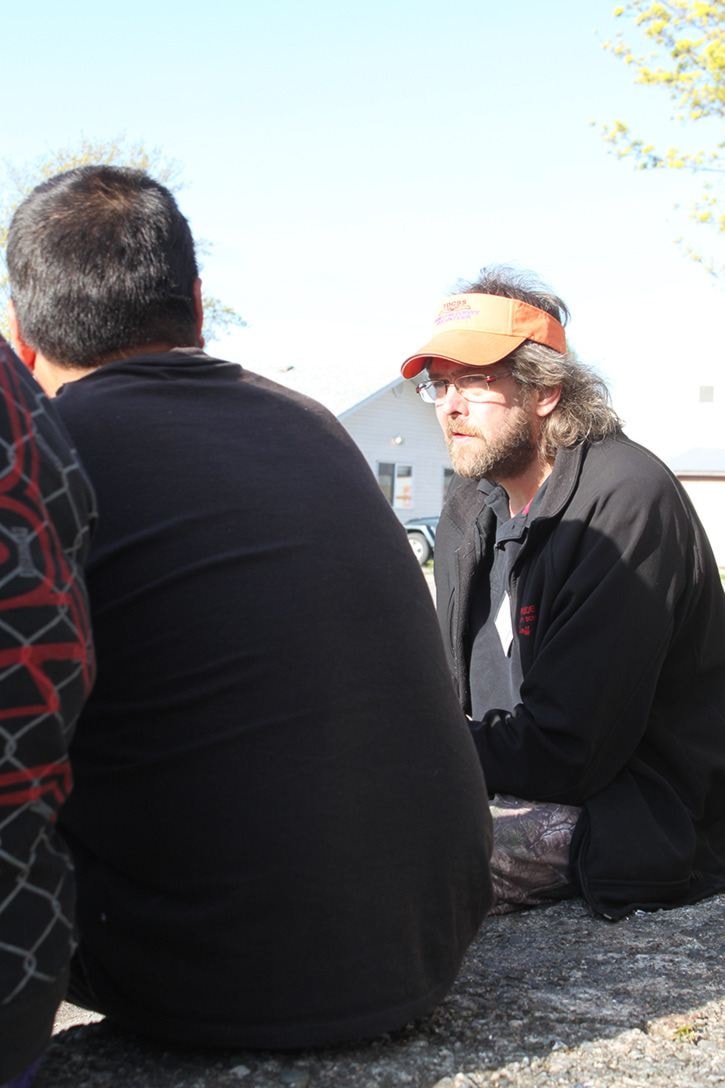There are 10 more homeless people on Terrace streets than last year according to the results of this year’s homeless count.
Conducted April 21 and 22, a team recorded 74 homeless, up from last year’s final count of 64, which was considered substantially higher than previous estimates.
“Maybe it’s the trauma from their background,” said lead organizer Mike Watson from the Terrace and District Community Services Society about why so many don’t have houses to stay in, though the questionnaire did not ask that question specifically.
What it did ask was the age of those surveyed, how long they have been homeless, the gender and whether they are aboriginal.
Broken down by gender, 29 were women and of those, at least 12 were First Nations. Overall there were 31 First Nations men, however, the nationality of 21 of the total was undisclosed at time of writing.
The data indicates a large transient population of homeless, especially considering what Watson figures to be a 30-40 per cent turnover rate since last year.
“Almost half of the people from the count last year we didn’t see again this year,” he said.
According to the numbers, the majority were between 40 and 57 years of age, though he couldn’t say why this would be the case. Of the aboriginal men, 21 were over 40 and eight aboriginal women were over 40.
Six counters combed behind buildings, in back alleys, and along riverbanks where the hidden segment of Terrace resides.
The count was similar to the one last year except the group was aided by Terrace Youth Residential Services, the youth shelter in Terrace.
“We’ve got some new younger ones,” said Watson after hearing word that three youths at the drop-in centre that day had nowhere to live.
Like last year many of the homeless people said they had trouble staying in a shelter run by the Ksan House Society because they don’t like the setting or because they are drunk and found that a damp shelter, so-called because it accepts people who have been drinking, closes March 16 which they say is too early.
The damp shelter is the only shelter option for those who are intoxicated.
There is another option, the cells at the local RCMP detachment, and some homeless regard that as a viable location during the winter months.
“Some people try to get sent to the drunk tank on purpose,” said one of the homeless counters.
The team included new volunteer recruits Keisha Stevens and Adrienne Goodridge who are both students at Northwest Community College.
Also on the team were people who helped with the count last year – Suzi MacDonald, Julie Mahil and Tracy Spencer who are also social work students at NWCC and UNBC.
Watson said the majority of homeless are in that situation because they have been unable to find housing.
But others have long ago learned to live outdoors and have done so much of their lives.
One man, age 61, who has been homeless in Terrace for 30 years said, “I did it and I just kept going” after both his parents passed away in his hometown of Greenville.
“I learned how to do it, and I kept going,” he said. “My parents taught me how to survive.”
He said there are no resources for the homeless in the Nass Valley that he could take advantage of so he left for Terrace.
Another man says he was just released from the hospital and pushes himself around in a wheelchair.
“There aren’t many places for people like him,” said Watson.
The provincial agency BC Housing does offer accommodation but spaces are always full, he said.
This year the homeless count team offered personal comfort bags in return for people doing the survey, including dental hygiene packages, fruits, vegetables and socks; razors and also juice boxes.
As was the case last year, the homeless count was financed by the City of Terrace through a grant.
Last year, $2,500 was spent and about $1,500 has been set aside this year.
The information gathered from the count will go toward discussions being conducted by the city and others on how to increase housing options of all kinds.
That discussion includes affordable as well as social housing.
